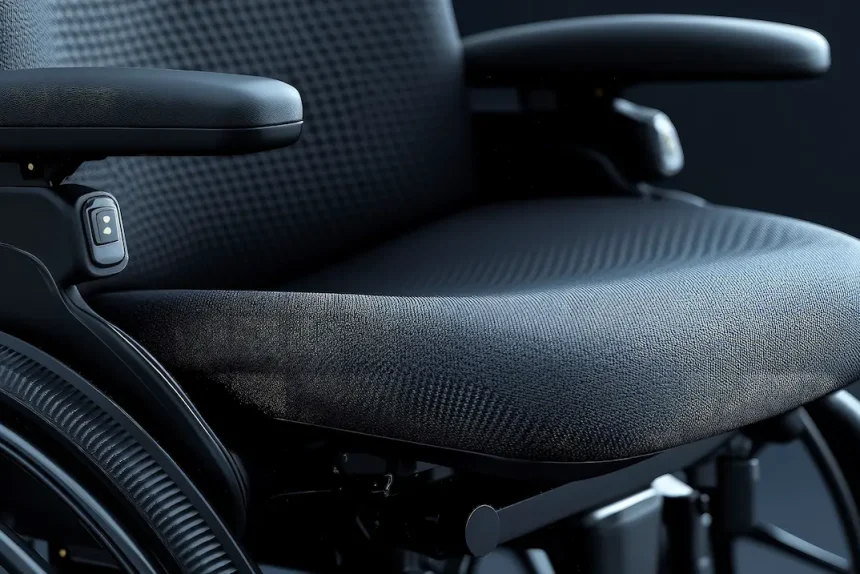Without the proper padding and support, pressure sores are likely to develop or worsen, and chronic pain can develop as a result of poor posture and constant pressure on joints. To prevent all these issues, selecting the right cushion is essential.
Wheelchair Cushions
Wheelchair cushions cater to a variety of needs, offering essential benefits:
- Comfort: Enhances prolonged sitting comfort.
- Postural Support: Assists in maintaining a neutral position.
- Pressure Relief: Reduces pressure on the skin and underlying tissues.
Considerations When Choosing a Wheelchair Cushion
When selecting a wheelchair cushion, it’s important to consider various factors to ensure optimal comfort and prevent complications such as pressure sores:
- Comfort and Stability: Look for cushions that offer both.
- Skin Protection: Choose materials that minimize friction.
- Microclimate Control: Ensure good airflow and temperature regulation.
- Cushion Weight and Height: Affect mobility and accessibility.
- Maintenance and Durability: High-maintenance cushions like ROHO require regular checks.
Types of Wheelchair Cushions
Wheelchair cushions can vary in material, function, shape, and construction:
- Foam: Basic, affordable with limited pressure relief.
- Gel: Offers pressure relief and cooling but can be heavy.
- Air: Adjustable for optimal comfort, great weight distribution.
- Honeycomb: Stable and durable but limited in pressure redistribution.
- Hybrid and Alternating Pressure: Advanced options for specific needs.
Best Wheelchair Cushion for Pressure Sores
For pressure sore prevention or treatment, consider cushions like:
- ROHO Contour Select: Conforms to body shape, provides posture support.
- Sunrise Medical Jay Union: Combines memory foam and fluid pad for comfort and stability.
Quick Guide to Wheelchair Cushion Materials
| Material | Benefits | Downside |
|---|---|---|
| Foam | Low cost, lightweight, low maintenance | Can lose shape quickly |
| Gel | Good pressure distribution, cooling | Heavier, requires kneading |
| Air | Exceptional pressure relief, adjustable | Needs regular air checks, less stable |
Interactive Question
Can you identify the key differences between gel and air cushions based on their stability and maintenance requirements?
Want detailed practice tips to ace the NBCOT® exam? Join now for full access!
What are the key benefits of using wheelchair cushions?
Wheelchair cushions provide several benefits, including enhanced comfort for prolonged sitting, postural support to maintain a neutral position, and pressure relief to reduce pressure on the skin and underlying tissues.
What factors should be considered when choosing a wheelchair cushion?
When selecting a wheelchair cushion, consider factors such as comfort and stability, skin protection to minimize friction, microclimate control for airflow and temperature regulation, cushion weight and height for mobility, and maintenance and durability of the cushion.
What are the differences between foam, gel, and air wheelchair cushions?
Foam cushions are low-cost and lightweight but may lose shape quickly. Gel cushions offer good pressure distribution and cooling but are heavier. Air cushions provide exceptional pressure relief and are adjustable but require regular air checks and can be less stable.
Which wheelchair cushions are recommended for preventing pressure sores?
For preventing or treating pressure sores, consider using ROHO Contour Select cushions, which conform to body shape and provide posture support, or Sunrise Medical Jay Union cushions that combine memory foam and fluid pad for comfort and stability.
How do gel and air cushions differ in terms of stability and maintenance?
Gel cushions offer good pressure distribution and cooling effects but are heavier and require kneading for maintenance. Air cushions are adjustable and provide exceptional pressure relief but need regular air checks and are generally less stable than gel cushions.



